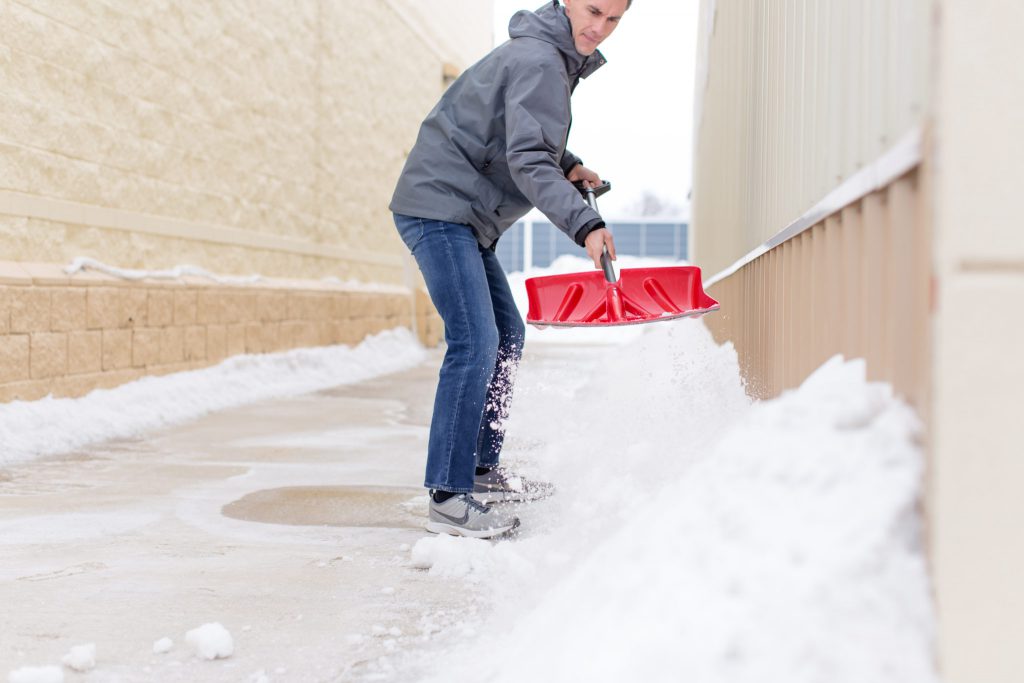by Dr. Matt Scotton, DPT, ATC, CSCS
How many times have you shoveled snow? How many times have you fallen down while shoveling show? Do you usually have pain or sore muscles in your back, neck, shoulders or legs after you clear the snow from your sidewalk or driveway?
Every winter more than 10,000 people in the United States go to the emergency room due to injury from shoveling snow. Many of these ER visit injuries were a result of falls with broken bones and some are heart attacks, but the vast majority of strains, sprains, and bruises from falls that contribute to back, neck, shoulder and hip pain are never examined in a hospital emergency room.
As a physical therapist for over 25 years I’ve evaluated and treated many people who have been injured while shoveling snow. Some have slipped and injured muscles, joints, tendons, or ligaments. A few have broken bones when they have fallen on the snow or ice. Most have strained muscles and experienced muscle spasm and limited mobility in lower back, neck or shoulder after using improper body mechanics while pushing or shoveling snow.
Most people don’t shovel snow 2 or 3 days per week so it’s not easy to condition your body for this physically challenging task. Here’s what you can do to reduce your risk of pain and injury while shoveling snow:
- Wear shoes with good traction in snow to reduce your risk of slipping and falling.
- Warm up your body by stretching your legs, back, neck and shoulders before you shovel.
- Push snow rather than lifting and throwing it whenever possible.
- Keep your back in a strong and straight position and use the strength in your legs when you push and lift the snow-filled shovel.
- Use an ergonomic shovel when possible. The bent handle makes it easier to keep your back straight and use good body mechanics.
- Switch your technique every minute by alternating the position of your hands on the shovel handle. This will change the workload on your body and reduce overuse, fatigue, and soreness from doing the whole job with the same technique.
- Take a break to allow your body to recover when you feel fatigued or uncomfortable.

If you experience signs of a heart attack, stop shoveling and dial 911. The combination of cold weather and exertion of most of the muscles in the body while shoveling snow triggers heart attacks for hundreds of people every year. Rapid treatment is the key to minimizing permanent damage to the heart muscle so heed the warning signs. Every minute counts.
If you do have experience pain or a movement problem after shoveling snow, it will often calm down after a few days. If it doesn’t, contact us to pursue a course of physical therapy at any one of our clinic locations (Pella, Des Moines, Oskaloosa, Newton, Ames, Centerville, or Waukee) by calling 866-588-0230.



